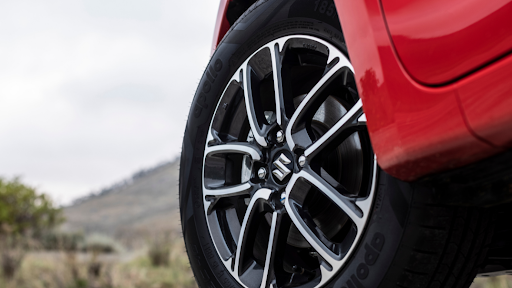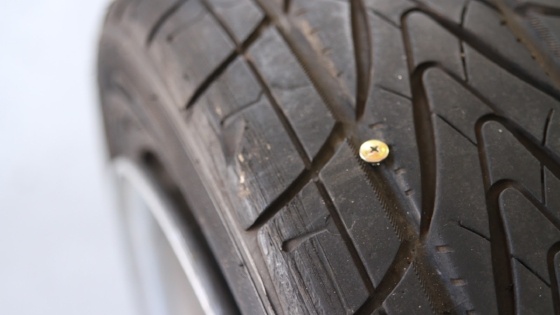 Your entire car rests on your tyres, this makes them very important for safety on the road. Learn how to keep them in good condition which will protect you and your passengers, as well as preventing unexpected costs.
Your entire car rests on your tyres, this makes them very important for safety on the road. Learn how to keep them in good condition which will protect you and your passengers, as well as preventing unexpected costs.
Your car wouldn’t be able to do what it does without tyres. The importance of tyre care and maintenance are not discussed as often as they should, given that your tyres are one of the most important parts of your car when it comes to safety.
Keep your eye on the following:
Tyre Tread
The tread of your tyres is to ensure that your tyres grip the road correctly. The smoother the tread on your tyres, the less traction you car will have, meaning you’ll be more likely to skid in wet conditions. Not only is it dangerous, but a low tyre tread depth also means your car will consume more fuel.
Tyre Surface
The K53 pre-trip inspection process requires drivers to check that each tyre is secure and inflated, and the pressure and thread have been checked. Once a person does their driver's licence test they may get out of the habit of checking these things, but a regular examination of your tyres is necessary for ensuring your safety on the road. We have mentioned tread but there is more that is required, check for uneven areas, bumps, bulges, or anything that may have punctured your tyre, like a nail or sharp object.
Tyre pressure
When you stop at a petrol station to fuel up, you get asked by the petrol attendant to check the pressure of tyres. This should only be done on cold tyres, so we recommend doing this first thing in the morning at a petrol station very close to your house. The correct tyre pressure will be found in the driver’s manual and on the inside of the driver’s door. It’s important that your tyres are the correct pressure. If it’s too high or too low, it will affect the braking and grip ability of your tyres. Your tyre pressure can be affected by the way you drive, the speed you drive, and the load in the car.
To better understand your tyres in more detail, read this article: Understanding your tyres.
What damages your tyres?
Uneven roads and potholes
Unfortunately, many South African roads are littered with potholes and some are bumpy, uneven, or have fallen into a state of disrepair. Some areas have speed bumps that may be higher than usual for safety reasons, but poor markings make these difficult to spot. Driving over a pothole or a speed bump at a high speed causes damage to your tyres and can even cause a tyre blowout.
Irregular wear
You can expect that over time your tyres will become worn due to standard use, but poorly maintained or incorrectly inflated tyres will wear unevenly, which means some areas of the tyre will wear down faster than others. This can lead to some areas of the tyre appearing perfectly safe and other areas being bald, which is very dangerous.
Sharp objects
Punctures are a result of sharp objects on the road e.g. screws, nails, or glass, which damage the tyre. As a consequence, the tyre could lose pressure. Should you notice that one or more of your tyres continuously lose pressure or you discover a screw or nail in the tread, you should visit your local tyre dealer as soon as possible to get your tyres checked.
So what do you need to do to ensure your tyres are maintained properly and that your safety isn’t compromised?
Check your spare wheel and your tyres
We often forget about our spare wheel until there’s an emergency. Don’t be caught with a flat tyre AND a flat spare tyre. Some cars have a full spare tyre and others have a space saver spare tyre. Be aware that the space saver spare tyre needs to be changed out as soon as you can, and that they carry an 80km/h speed limit. While ensuring your spare wheel is in excellent condition, you should also check your tyre tread regularly - at least every two weeks.
Manage the pressure
If you know you will be carrying a heavy load or many passengers in your car, change the tyre pressure accordingly to maintain the safety of your car and the maintenance of your tyres. It would be best to have this done at a petrol station or your nearest dealership while the tyres are cold.
Wheel alignment
Your wheels need to be kept in balance to ensure a smooth ride. If you find that your car’s steering is pulling more to one side while driving or shaking at higher speeds, you should check your wheel alignment. Wheel alignment also ensures more even wear on the tread of your tyres. It’s best to realign your wheels every 10 000kms, which can be done at any certified tyre dealership.
Tyre rotation
For people who don’t know, tyre rotation is the practice of swapping the location of the tyres currently on your car. This means removing each tyre on your car and refitting them in a different position so your front tyres will be rotated to the back. The biggest wear and tear is on the front tyres so if you don’t rotate, you will need to replace them before the rear tyres. This means more money out of your pocket as you'll end up replacing four tyres instead of two. At Suzuki, we recommend doing your tyre rotation every 10 000kms.
Download this guide to extending the lifespan of your car, and get some advice on looking after your car and keeping it longer.
![How to change a tyre [infographic]](https://blog.suzukiauto.co.za/hubfs/How%20to%20change%20a%20tyre/How%20to%20change%20a%20tyre-104140-edited.jpg)
.png)
